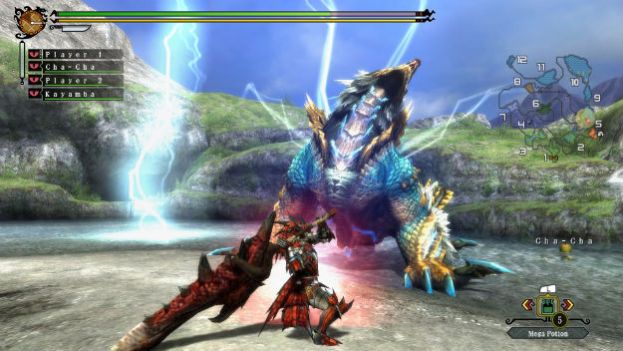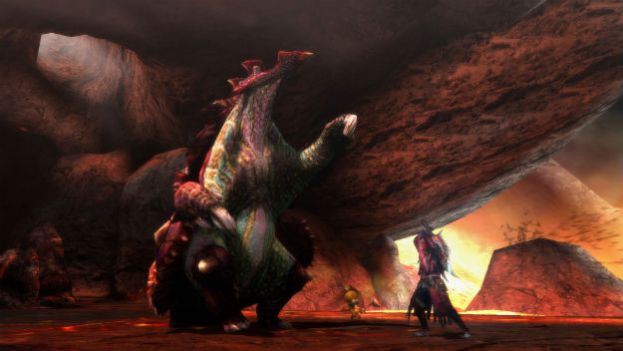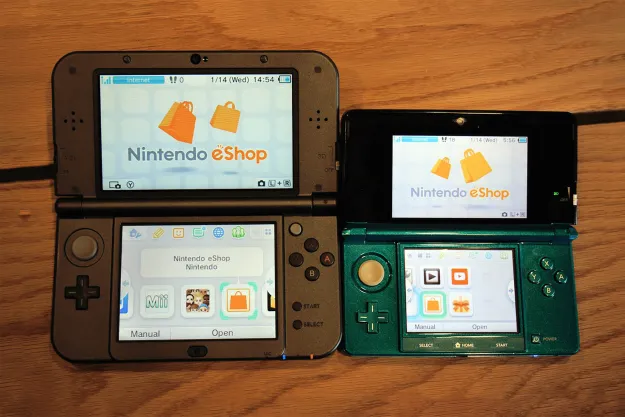
There is a common refrain in the world of video games: Japanese role-playing games are dead. You hear it all the time, and it is fueled by the success of Western-style RPGs like Fallout 3, Skyrim, and many others that put a heavy emphasis on traditional combat. It’s a patently false statement, of course, as anyone with a Nintendo DS or a PC can tell you, and even despite the shit in RPG style, the big budget epic fantasy with simple, turn-based combat rooted in the old school Dungeons & Dragons rules survive.
The truth is that the old style of the Japanese role-playing game, as it was conceived in games like Yuji Horii’s foundational NES game Dragon Quest, has hit an evolutionary dead end. Fine work is still being done, but like other arts of their time like beat poetry or post-bop jazz, there’s not much room for innovation – and game makers recognized it a long time ago. The RPG fantasy scenario as it was: You are a lone hero striking out into the world to conquer an ancient evil, and only with the help of friends met along the way can you succeed. It was, from Dragon Quest to Persona to nearly every Final Fantasy, a hero’s quest. That scenario has evolved under our very noses, and its modern form is perfectly incarnated in Monster Hunter 3 Ultimate on Nintendo’s Wii U.

Hunter’s Instead of Heroes
As with many a role-playing game, you build your character from the ground up in Monster Hunter using a limited selection of physical features, but unlike Skyrim where your homemade game self is the fated Dragonborn, you’re just a hunter. Moga Village, a happy and usually prosperous fishing community, is having some trouble with sea monsters big enough to cause earthquakes, so you’re there to help out. The grandest thing that Monster Hunter Ultimate 3 does is give you a role in the game that isn’t particularly grand. Chipping into the community, not saving the world, is the goal of the game, and doing so requires a lot of effort, patience, and failure.
To its credit, the game starts you out slow, giving you a handful of small quests to learn the ins and outs of playing. There are four main ways to pass the time in the game. Venturing outside of Moga Village into the surrounding forests, caves, and oceans to gather goods; maintaining the village itself by supporting the farm, fishing boats, and local businesses like the blacksmith; setting out on quests for the Hunter’s Guild on your own; and finally, setting out on bigger quests with friends and other intrepid players, either locally or online.

Early story quests range from heading out to smack up some smaller monsters to collecting pieces of coral on the ocean floor. The sheer variety of options—in crafting your own items, blacksmithing, or even what weapon to use in the field—could be daunting were the game not so patient and good humored. Characters like the village chief and his son are funny and have their own personalities that help ground the strange world of the game. Failure isn’t severely punished, either. If you’re put down by some particularly squirrelly beast (you faint rather than die), you don’t lose all your resources, just time. It’s easy to head back out and try again.
By the time the first two tiers of quests in the village are over, which can take around 8 hours, you start feeling like you understand the ebb and flow of the game and the broader world of Monster Hunter is revealed.
Learning a Craft
Combat in Monster Hunter has an unusual pace. Whether swinging the lightest twin daggers in the game or the heaviest war axe, effective fighting depends on timing and position, not how strong a given weapon is. Even small monsters like the omnipresent velociraptor-like jaggi and baggi can be tough to take down at first because of the strange rhythm for swinging weapons. Combat is a steady process of unsheathing your weapon, alternating between heavy and light strikes, dodging, and putting the weapon away to use items on the fly. All four actions are mapped to the face buttons on the Wii U pad, which feels surprisingly comfortable for this game. Part of the fun is learning which weapons you prefer. I found that early on I liked the speed offered by the dual blades, but later when playing online, I liked the patience required to use the ranged bow.

Learning which weapon you will prefer leads into the delicate process of growing your character by building new gear. Armor and weapons can be bought or traded for, but the quickest route is by building the armor using the bones and skins of felled monsters as well as rocks and other goods found in the game’s different maps. Those maps are opened slowly in the campaign but quicker if taking on Guild Quests from the nearby Marina, where you can meet up with others online. It’s not impossible to be a completist in Monster Hunter, but it would take a hell of a lot of time. The best materials and rewards come from hunting big game online. Even when joining a maximum four-player party, you can still take on quests by yourself, but even a low-level bruiser like the Barroth can be difficult to tackle on your own.
New Old World
Part of Monster Hunter’s excellence, however, is that you don’t have to go out and be the best hunter around. Don’t want to head out into the world to try and make the greatest gear and take down the towering nasties you need a team for? Don’t do it. Stick around Moga and gather materials for the farm so you can grow the mushroom patch. Take solo quests only and compete in the Arena, using specific gear so only reflexes and combat talent is tested. The world is what you make of it in this game.

That world is also not what you’d expect from second to second. The setting created by series mastermind Ryozo Tsujimoto is a roughhewn cross between Robert E. Howard’s prehistoric fantasy world, Incan and Mayan art traditions, and medieval Japan coated with a thin layer of good-natured surrealism. It’s a place where you’ll stumble upon a secret hideout for cat thieves in a cave while on the run from enormous dinosaurs. Human moments, like the opportunity to grill a piece of meat out in the desert or meet up with strangers to fulfill a simple task, make the world feel less like a theme park than like a real place with history. The small field maps of a dozen or so interconnected areas are never so complex that you’ll get lost, but the world itself is an easy place to lose yourself in.
The GamePad Finds a Match

Monster Hunter 3 Ultimate isn’t the prettiest game out there. Its origins as Monster Hunter Tri on Nintendo Wii and later on Nintendo 3DS (the Wii U and 3DS editions were released one year apart in Japan) leave it with a gritty color palette that in its best moments leave the game with a pleasantly spare feeling, but at the worst they just make it look washed out. Still the shift to HD does a lot for the game’s beasts, giving them impressive personality comparable to last year’s Dragon’s Dogma. The Wii U pad is especially well suited to the game, feeling very comfortable thanks to the customizable touch screen. It can be laid out with a variety of useful inputs like a map and chat options.
The comfort of the Wii U pad is part of why the Nintendo 3DS version feels so busted in comparison. Without the Circle Pad Pro attachment for the 3DS, camera movement is done with the touch screen, which just doesn’t feel good in practice. Even with the Circle Pad Pro though, the game feels cramped and washed out on the 3DS’ screen. The Wii U edition of the game is the preferred option, especially for players without a core group of friends that already play, since the Nintendo 3DS edition doesn’t support online play.
Conclusion

Monster Hunter 3 Ultimate succeeds as an entertaining game on a purely mechanical level. It’s fun to maintain the town, playing hunter and gatherer for one little group of people in a big world. This edition of the game, so accessible and fine tuned on Wii U, is most admirable for how it evolved the old role-playing life. Here’s an opportunity to do good in a place where you don’t also have to be the messiah.
There’s no group of feisty teenagers to team up with, just a small group of friends or good samaritans playing online. It’s a game that can sometimes have quiet moments rather than explosions and grand vistas every two seconds. The JRPG has moved on and actually, just a little bit, grown up.
Wii U Score: 8 out of 10
3DS Score: 7 out of 10
(These games were reviewed on the Wii U and the 3DS thanks to copies provided by the publisher)
Editors' Recommendations
- Play these 3DS and Wii U games before Nintendo shutters their online features
- As the 3DS eShop closes, devs reflect on a golden age of Nintendo indies
- You need to get this oddball Zelda game for free before the 3DS eShop closes
- The Nintendo 3DS’ best (and weirdest) cult hit is coming to Apple Arcade
- Nintendo’s Wii Shop Channel and DSi shops are back online


